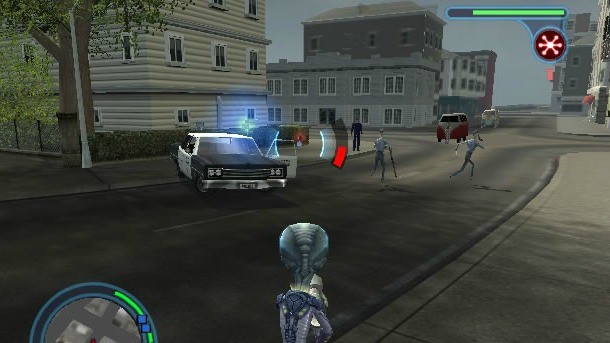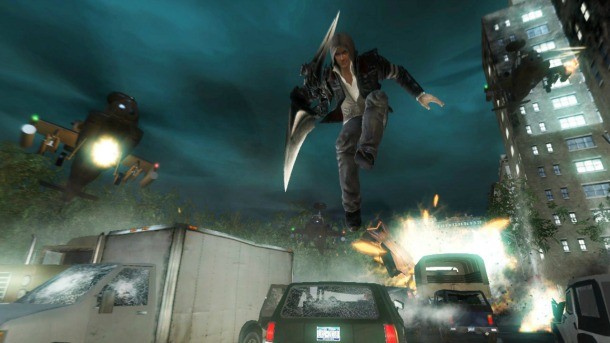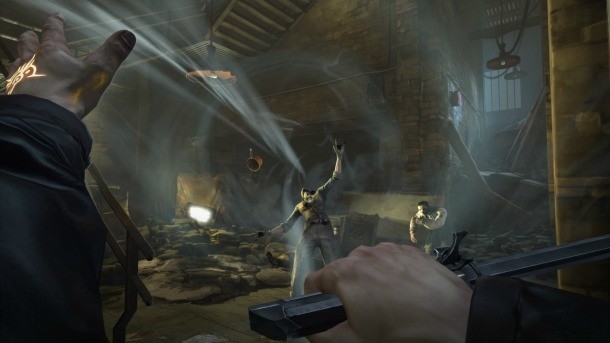Our extra-large special edition is here. Subscribe today and receive the 25% longer issue at no extra cost!
10 Games To Give You An Out-Of-Body Experience

In most story-based games, you play as one character from beginning to end. This makes it easier for the player to assign skill points, keep track of inventory, and build a connection to the body they’re inhabiting. Sometimes, though, one body just isn’t enough. In Double Fine’s Headlander, for example, your disembodied head jumps from robot to robot to open doors and fight enemies.
But that’s not the first game to let you play around with multiple bodies. We took a quick dive through gaming history to unearth a few other times when all you needed to solve a problem was a new perspective.

Oddworld: Abe’s Odyssey
Being able to control enemy Slags by chanting is just one of many weird things about Oddworld: Abe’s Odyssey. It has a strange sense of humor, its characters are extremely quirky, and it takes place on a series of interconnected screens instead of distinct levels (which was a little strange back in 1997). You can read Joe Juba’s review of the updated New ‘n’ Tasty edition here.

Geist
Geist’s premise has a lot of potential. Scaring humans into a vulnerable state then possessing their bodies to solve puzzles sounds unique, and taking on the bodies of other people can lead to some great story moments. Unfortunately, most of the puzzles in Geist are fairly simple and rely on simple lock-and-key mechanisms, turning the ability to possess other people into just another way to open doors instead of letting you experiment however you want.

Destroy All Humans! 2
In the original Destroy All Humans, alien protagonist Crypto can create holograms of humans to impersonate and distract his way to his goals. In the sequel, he can body-snatch them proper, using them for mostly the same purposes. Here, again, it’s mostly used as a way to get into otherwise restricted areas. But as one of multiple tools in your arsenal to wipe out humanity, it adds some flavor instead of making things boring, and “body-snatching” felt more in line with the vibe of the series than creating holograms.

Prototype
Much like Destroy All Humans! 2, Prototype lets you become an ordinary person in order to infiltrate places you aren’t supposed to get into (in this case, military bases). It’s not exactly body-swapping (rather than take control of a person’s actions, you transform into the last person you consumed for energy), but it’s close enough. Besides, it has the same effect: for a few moments you became someone else, taking on their traits and using them to your advantage.

Ghost Trick
In Ghost Trick, you can’t swap bodies, but you can do the next best thing: possess objects in the world around you to solve adventure game-style puzzles. You manipulate doors to get people to move around, to notice certain things in the room, or prevent someone from dying. A lot of this involves figuring out how to get from one end of the room to the other using moving objects in tandem with each other, like using fan blades to swing a rope. You can also travel through any phone line instantly -- an ability most of us wish we had.

Stacking
Stacking doesn’t deviate too far from our central body-swapping narrative (using other people as keys to open doors), but what made the game stand out was how you did it. Every character in Stacking is a Matryoshka doll, and the tiny player character, Charlie Blackmore, has to work his way into larger and larger dolls to gain entry to certain parts of each level. He can’t go after the biggest dolls from the start, either -- he has to possess dolls that were at one size larger, first. It’s a clever hook, and in his review, Jeff Marchiafava said “the puzzles are clever, the humor hits the mark more than it misses, and the characters and story are delightful, leaving adventure fans with little more to ask for.”

Driver: San Francisco
Driver: San Francisco mixes up a wide assortment of concepts and makes them work. It has the look and feel of a 70s cop drama. It borrowed ideas from 90s soap operas, such as most of the plot taking place in protagonist John Tanner’s head while he’s in a coma. And through these premises and influences, we get the ability to fly around as a ghost and posses anyone driving a car. Rather than treat people as keys, it lets you fly around and be other people for fun. It works surprisingly well, with Jeff Cork calling it one of the most surprising games of 2011 in his review.

Dishonored
In Dishonored, you can learn to possess small animals like rats or fish. Upgrading the move allows him to control people as well, though it’s not a complete possession; the bodies you inhabit can’t fight or climb, so you mostly use them to get by guard emplacements. It costs most of your mana bar and you can’t posses everyone, but as one of several tools you can use to get to your target, it actually feels like it’s opening up your options instead of limiting them. You can read Joe Juba's review of the game here.

Crawl
In Crawl, five people play a game of fantasy tag. One player, as the hero, tries to make their way through a dungeon while battle hordes of monsters, which the other three players controls. If one of the monsters kills the hero, they swap places: the hero would die and take control of the monsters and vice versa. The setup has plenty of potential, but without online multiplayer to let friends from different parts of the world play together, it hasn’t taken off the way it could have.

Inside
(Warning: spoilers for Inside follow)
We don’t want to spoil too much about what happens in Inside (the game hasn’t been out that long), so we’ll keep things clinical. At some point, you control at least one body other than your own. The reason you can control other bodies potentially reinforces some of the game’s themes, which is pretty cool. You can read Kyle Hilliard’s review of Inside here. We’ll leave it at that.

Get the Game Informer Print Edition!
Explore your favorite games in premium print format, delivered to your door.
- 10 issues per year
- Only $4.80 per issue
- Full digital magazine archive access
- Since 1991









